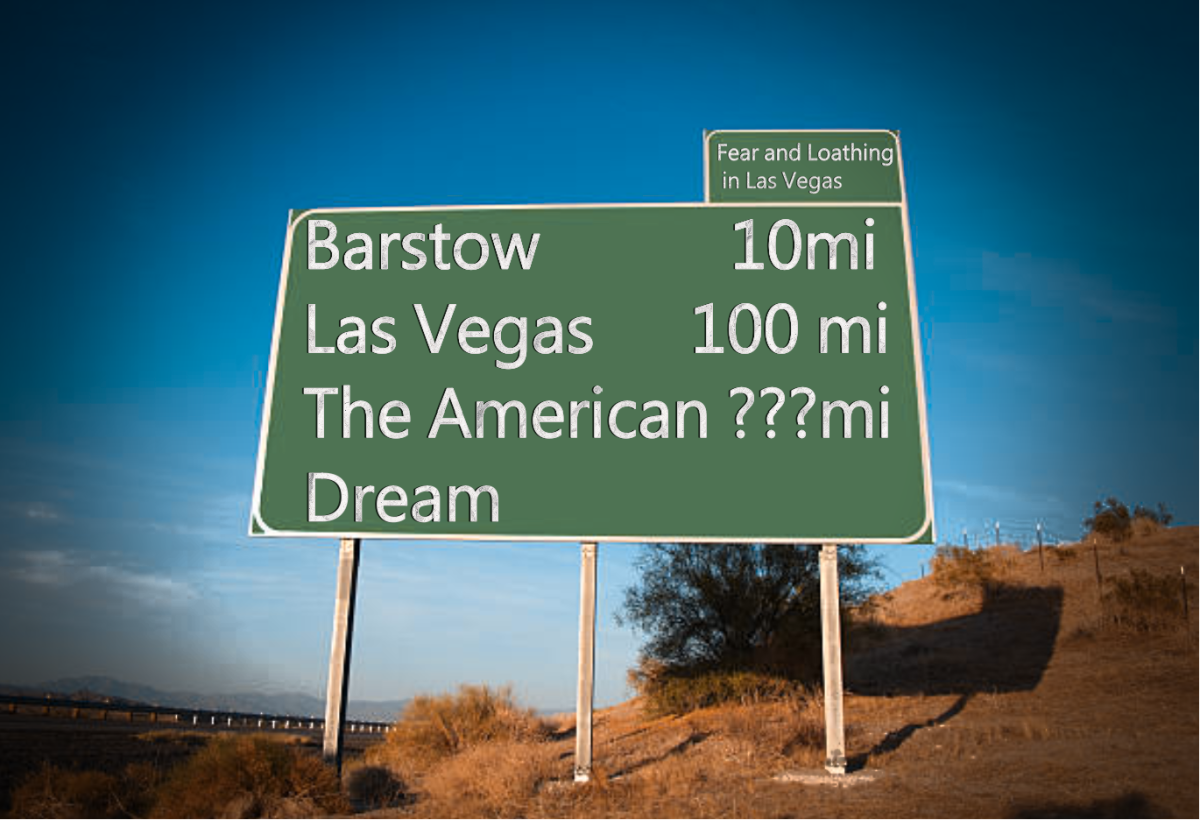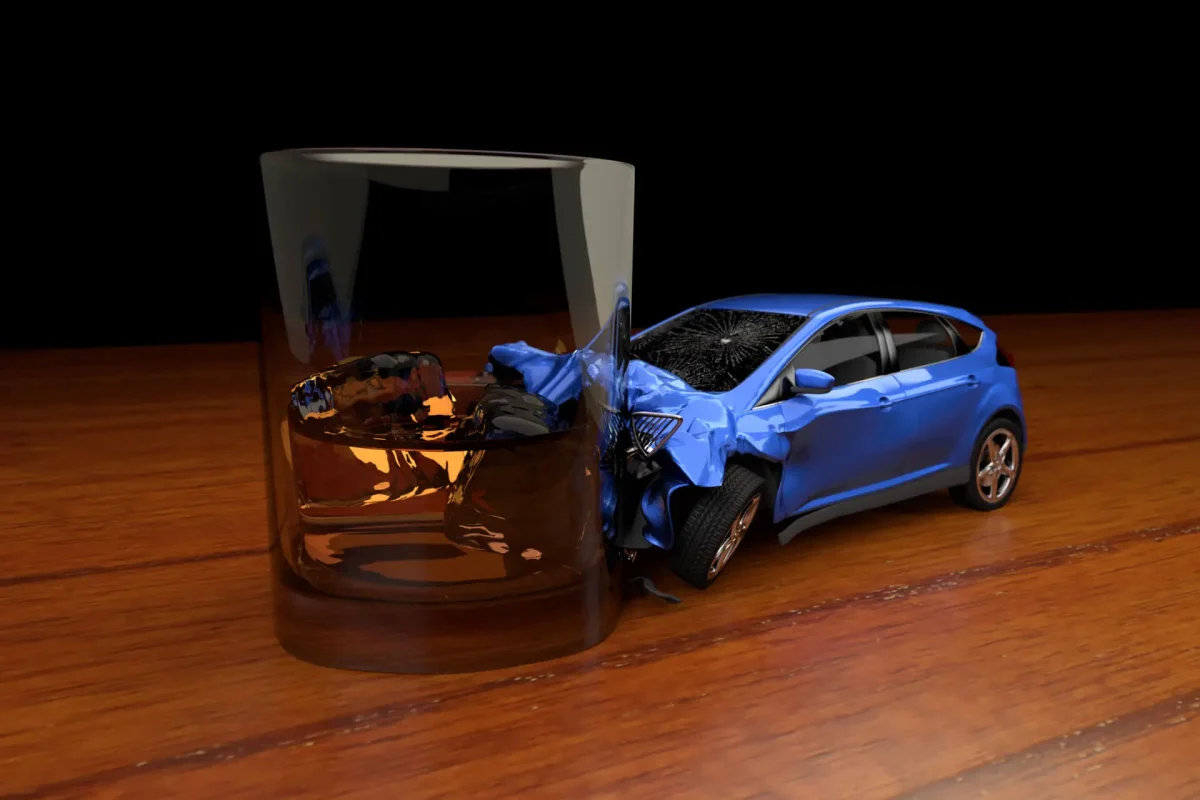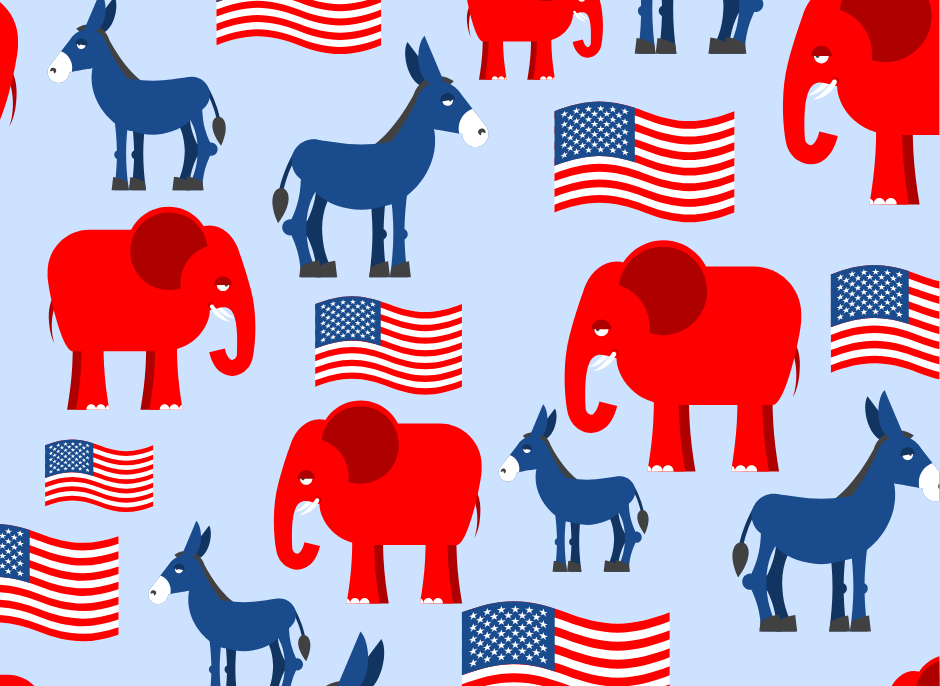“We were somewhere around Barstow on the edge of the desert when the drugs began to take hold.” So begins “Fear and Loathing in Las Vegas” by Hunter S. Thompson.
I read a lot, mostly surreal fiction and sci-fi. Of all the books in 2023 I have read, “Fear and Loathing” is one of the best. There is no work quite like it and there probably never will be again. It is unique to itself and its time.
I first encountered Hunter Thompson through drawings. The book features a series of illustrations by Ralph Steadman. My dad had a print of one, but my mom made him hang it in the basement because she was scared by it. It featured scary looking animals and grotesque caricatures of humans, so I get where she was coming from. When I was older, and more clearly understood the cultural context and social commentary present in Thompson’s surreal drug-induced nightmare of a novel, I decided to read it.
Thompson was the founder, and main proponent of, the gonzo journalism movement, a style of reporting that features the reporter and their subjective account of events in the forefront. This style is known for producing scathing social commentary and featuring prurient profanity in its purest form.
“Fear and Loathing” is a fictional account of real trips Thompson and his lawyer took to Las Vegas in 1971 to cover the Mint 400 dirt bike race. The book almost immediately devolves into a story of drug fueled insanity and supplants any real type of objective journalism Thompson was meant to do. The race is a minor detail in Thompson’s escapades.
The bulk of the novel revolves around the self described degeneracy of Thompson and his lawyer. Throughout the book they take a ludicrous amount of drugs, including but not limited to: cocaine, LSD, mescaline, ether, speed, amyls, seconal, and adrenochrome. This produces realistic situations that are stranger than any fiction author could write.
One example is when Thompson arrives at his hotel. He is on both LSD and mescaline, he hallucinates that the other guests are lizards having an orgy, the floor is lava that can only be traversed through the use of golf shoes, and that there are roaming bands of bloodthirsty pterodactyls out to get him.
While reading the book you get caught up in Thompson’s trance due to his expert and raw writing. The surrealness of Thompson’s style makes the tone either very calming or jolting and harsh for readers. This constant and instant tone shifting is due to the changing drug cocktail altering Thompson’s perceptions of reality. One moment he is seemingly in control of his own body and merely hallucinating; another moment he finds himself losing control and behaving “like the village drunkard in some early Irish novel.”
It can also be said that the flow of the novel is not unlike the drug binge Thompson experiences. The first two thirds of the book are electric and intense, while the end of the book is fairly slow and dips more into melancholic depression and paranoia. I think that this fact is unintentional on Thompson’s part and is created just from the nature of his experience. A large part of the novel’s end is focused on Thompson and his lawyer escaping Vegas alive while being paranoid about the world coming after them and being paranoid about their own paranoia. This paranoia does not lend itself well to the same kind of energetic writing as the drug fueled hedonism at the book’s start. There are also brief stints between sections of debauchery, when Thompson is almost clear headed, that feature intense philosophical musing about society and “modern” culture.
A key question, and a fair one, is “why is this book important and not just the insane ramblings of a mad man on enough drugs to make the Manson family jealous?” The answer is that, beyond just being a good read, “Fear and Loathing” is the literary swan song of the counterculture movement that started in the 1950s and hit its high water mark in the late 1960s. It is a fantastic lens from which to view the final days of the counterculture movement.
The counterculture and drug movements were pioneered in the 1950s by authors like William S. Burroughs and Jack Kerouac; they were the beatniks of New York who embraced anti-materialism and rejected the social conventions of the time. As the 1960s crashed onto the scene the beatniks either faded away or, like the American poet and writer Allen Ginsberg, became hippies. By 1965, figures like Terrence McKenna and Timothy Leary were advocating and participating in the “acid craze.” This was the peak of the movement, but in 1968 Richard Nixon was elected and the hippie movement ran out of steam. [As Thompson put it, “You can almost see the high-water mark—that place where the wave finally broke and rolled back.”]
While on the surface “Fear and Loathing” chronicles the depravity of two men in Vegas, it is really Thompson’s examination of the state of the “American Dream”. Indeed, the subtitle of the book is “A savage journey to the heart of the American Dream.” While the subtext is less than subtle, exploring the American Dream is the main purpose of the work.
For people most involved with the hippie movement during the late 1960s, being hippies meant freedom from the old systems and forces of the world. There was no need to work in an office, live the same lives as all your neighbors, buy a house, and have a litter of kids. It was a rejection of what was the established American Dream in favor of a whole new type of life with its own social orders and institutions. In the 1960s, the hippies hoped to create their own world with its own rules. Unfortunately for them, this new world was inherently incompatible with the world that was created for them, and that old world won in the end.
Despair and anguish leak out of the pages as Thompson laments that “the forces of old and evil” won in the end, and his dream for a new America was crushed. This matched the feelings of many across America who were sad to see the hippie movement fail. By 1971 the cold and depressing reality of the 70s had firmly replaced the hope and color of the 60s, and people were still coming to terms with it.
Thompson correctly states however, that the failure of the movement came not just from outside forces, but its own flawed internal structures. The main flaws in the actions of people like author Timothy Leary were that they “crashed around America selling consciousness expansion without ever giving a thought to the grim meat-hook realities that were lying in wait.” Leary, in Thompson’s mind, sold the idea that “somebody… or at least some force – is tending the light at the end of the tunnel.” There was no such force, and in Thompson’s view, that is what killed the movement; you can give people the ability to look beyond the reaches of our universe and see heaven or perfection, but they will always come back to reality and be disgusted by it. The hippies, like Thompson, were riding a high that could only go for so long before coming back down to earth.
This palpable despair for the loss of this new American Dream in favor of the old and gray mixed with its drug-fueled rampage makes this book both a unique read, and a living piece of literature. It is so thoroughly grounded in a specific time, place, and experience that it creates a perfect image of what life was like in Las Vegas in the exact time and space of its writing. However, it is not just a time capsule. Besides being the best anti-drug PSA of the last 50 years, Thompson’s cynical observations about the death of the American dream are still relevant. Many people to this day believe that the American Dream is dead, or even that it never existed in the first place.
I do not agree with Thompson that the American Dream is dead and that we will all end up like “caricatures of used-car dealers from Dallas.” I think that his outlook comes from a time, both for Thompson and millions of people across America, of unbridled cynicism and depression. While the hippie movement did fail, social change took root. The America of 1972 was very different from the America of 1962. Just like the America of 2022 is very different from the America of 2012 and I assume 2032.
“Fear and Loathing in Las Vegas” is a book that perfectly encapsulates a culture dying from the inside, lamenting its own demise. Nothing like it has ever been made before, or ever will be again. I recommend it to everyone.










Paul • Jan 22, 2024 at 4:13 pm
During college, Hunter, S Thompson had a amazing and unique flair for writing ! It obviously evolved into masterpieces from there. Whether it be Hells Angels, Fear and Loathing or Curse of Lono and other life experience and politically based novels, he was always a very respected journalist!! Man, I miss him! I would love to seehow he would interpret the world today?
Stephanie • Jan 15, 2024 at 9:59 am
Much respect